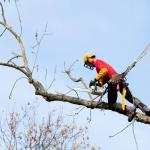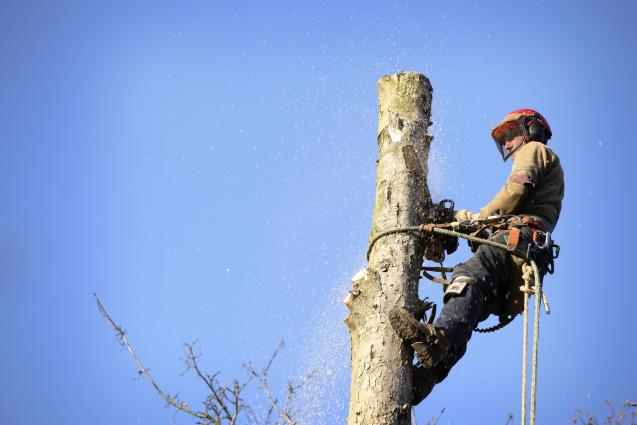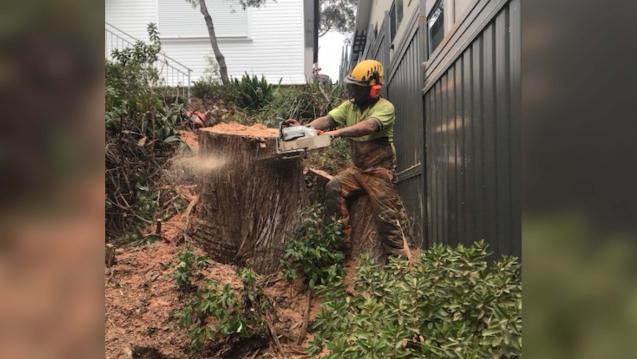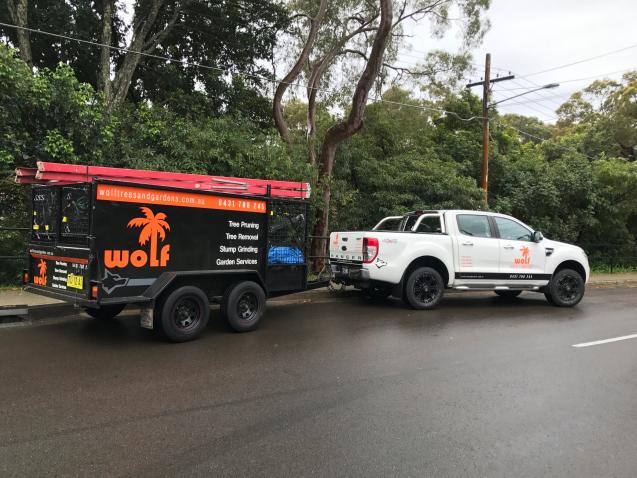
A Comprehensive Guide: Addressing the Challenges in DIY Tree Removal
By Wolf Trees and Gardens|March 18, 2024
Trees serve as incredible additions to our surroundings, providing numerous environmental and aesthetic benefits. However, varying circumstances such as diseases, potential hazards, or simply the need for a change in landscape may necessitate their removal. Those adventurous enough to undertake this project on their own face a multitude of unique challenges. This article attempts to shed light on these challenges and solutions to address them, keeping in mind the potential risks and repercussions of improper tree removal on both personal safety and property damage.
Understanding the Basics of Tree Removal
The process of tree removal entails more than chopping down a tree and hauling it away. It is a complex procedure involving careful planning, the right tools, and a deep understanding of trees themselves. It can be tempting to pursue a do-it-yourself path for tree removal; the idea of saving some cash is appealing, and many see it as an opportunity to engage directly with nature.
Equipping oneself with appropriate tools and equipment is a crucial step. Chainsaws, handsaws, loppers, and stump grinders are a few examples, and they need to be in good working condition. Safety gear, such as helmets, gloves, boots, protective eyewear, and sturdy work clothes, should not be overlooked. Completing an enormous task like tree removal requires safety precautions and regulations, thus ensuring that you do not harm yourself and others in the process.
Identifying the Common Challenges in DIY Tree Removal
Every DIY project comes with challenges, and tree removal is no exception. Three primary hurdles include underestimation of root systems, misjudging the tree's size, and ignoring the location's influence.
Root systems are more complex than they appear. The roots of massive, old trees can reach deep down and far out, well beyond the tree's visible boundary. This might lead to an unexpected challenge when excavating them.
The tree's size significantly influences the difficulty of removal. Large trees obviously require more effort and manpower. The tree's location is another critical factor. It becomes more complicated if the tree is located near buildings, utility lines, or other trees, increasing the chance of causing significant damage.
Critical Risks and Safety Concerns
Risks in tree removal come in many forms. An unforeseen danger is the tree's behaviour once it is cut down. The tree might fall in an unexpected direction, causing personal injury or property damage. The tools and machines necessary for tree removal can also pose threats if mishandled. Using a chainsaw, for instance, is a challenging task requiring diligence.
It's essential to strictly adhere to safety procedures regardless of an individual's comfort level with tools and machines. Respect for one's physical limitations cannot be understated in this arduous process; physical fitness plays a crucial role in determining the success of DIY tree removal efforts.
Overcoming Challenges with Correct Techniques and Methods
Understanding and implementing proper techniques can significantly mitigate risks associated with tree removal. For example, felling a tree in a desired direction or slicing it into manageable sizes requires precise cutting techniques. Mastering these methods can make the task more manageable and safer.
Knowing how to use equipment correctly is vital too. For example, operating chainsaws requires sufficient knowledge and precaution. Preventing property damage also requires strategic planning, such as ensuring a clear drop zone for the tree trunk and branches.
No matter how perfectly a situation seems under control, it's always wise to have emergency measures in place. A suitable first aid kit, emergency contact numbers, and a well-planned escape route can make a large difference when things go awry.
Importance of Hiring Professionals
There are instances where the risks and challenges of DIY tree removal outweigh the benefits. Large, old trees or those close to utility lines are best left to professionals. They can navigate the unanticipated complexities of the job and come equipped with specialised equipment, skills and training.
Professionals can also help avoid potential dangers that may not be evident to an amateur. The cost-benefit analysis of hiring professional tree removal services often leans in their favour considering the cost and consequences of potential personal injury or property damage.
In choosing a tree removal service, it's important to consider a company's reputation, qualifications, insurance coverage, and customer reviews. Also, make sure to get detailed cost estimates to avoid hidden fees and charges.
Conclusion
While DIY tree removal might appeal to some, it's important to remember that this task comes with significant challenges, from understanding the complexity of trees and ensuring safe practices, to applying the correct techniques. The deciding factor between a DIY or hiring professionals often boils down to personal comfort and the specific characteristics of the tree in question. We invite our readers to weigh these considerations carefully and, if you'd like, share your experiences and thoughts on this complex yet rewarding task.
Understanding the Basics of Tree Removal
The process of tree removal entails more than chopping down a tree and hauling it away. It is a complex procedure involving careful planning, the right tools, and a deep understanding of trees themselves. It can be tempting to pursue a do-it-yourself path for tree removal; the idea of saving some cash is appealing, and many see it as an opportunity to engage directly with nature.
Equipping oneself with appropriate tools and equipment is a crucial step. Chainsaws, handsaws, loppers, and stump grinders are a few examples, and they need to be in good working condition. Safety gear, such as helmets, gloves, boots, protective eyewear, and sturdy work clothes, should not be overlooked. Completing an enormous task like tree removal requires safety precautions and regulations, thus ensuring that you do not harm yourself and others in the process.
Identifying the Common Challenges in DIY Tree Removal
Every DIY project comes with challenges, and tree removal is no exception. Three primary hurdles include underestimation of root systems, misjudging the tree's size, and ignoring the location's influence.
Root systems are more complex than they appear. The roots of massive, old trees can reach deep down and far out, well beyond the tree's visible boundary. This might lead to an unexpected challenge when excavating them.
The tree's size significantly influences the difficulty of removal. Large trees obviously require more effort and manpower. The tree's location is another critical factor. It becomes more complicated if the tree is located near buildings, utility lines, or other trees, increasing the chance of causing significant damage.
Critical Risks and Safety Concerns
Risks in tree removal come in many forms. An unforeseen danger is the tree's behaviour once it is cut down. The tree might fall in an unexpected direction, causing personal injury or property damage. The tools and machines necessary for tree removal can also pose threats if mishandled. Using a chainsaw, for instance, is a challenging task requiring diligence.
It's essential to strictly adhere to safety procedures regardless of an individual's comfort level with tools and machines. Respect for one's physical limitations cannot be understated in this arduous process; physical fitness plays a crucial role in determining the success of DIY tree removal efforts.
Overcoming Challenges with Correct Techniques and Methods
Understanding and implementing proper techniques can significantly mitigate risks associated with tree removal. For example, felling a tree in a desired direction or slicing it into manageable sizes requires precise cutting techniques. Mastering these methods can make the task more manageable and safer.
Knowing how to use equipment correctly is vital too. For example, operating chainsaws requires sufficient knowledge and precaution. Preventing property damage also requires strategic planning, such as ensuring a clear drop zone for the tree trunk and branches.
No matter how perfectly a situation seems under control, it's always wise to have emergency measures in place. A suitable first aid kit, emergency contact numbers, and a well-planned escape route can make a large difference when things go awry.
Importance of Hiring Professionals
There are instances where the risks and challenges of DIY tree removal outweigh the benefits. Large, old trees or those close to utility lines are best left to professionals. They can navigate the unanticipated complexities of the job and come equipped with specialised equipment, skills and training.
Professionals can also help avoid potential dangers that may not be evident to an amateur. The cost-benefit analysis of hiring professional tree removal services often leans in their favour considering the cost and consequences of potential personal injury or property damage.
In choosing a tree removal service, it's important to consider a company's reputation, qualifications, insurance coverage, and customer reviews. Also, make sure to get detailed cost estimates to avoid hidden fees and charges.
Conclusion
While DIY tree removal might appeal to some, it's important to remember that this task comes with significant challenges, from understanding the complexity of trees and ensuring safe practices, to applying the correct techniques. The deciding factor between a DIY or hiring professionals often boils down to personal comfort and the specific characteristics of the tree in question. We invite our readers to weigh these considerations carefully and, if you'd like, share your experiences and thoughts on this complex yet rewarding task.



